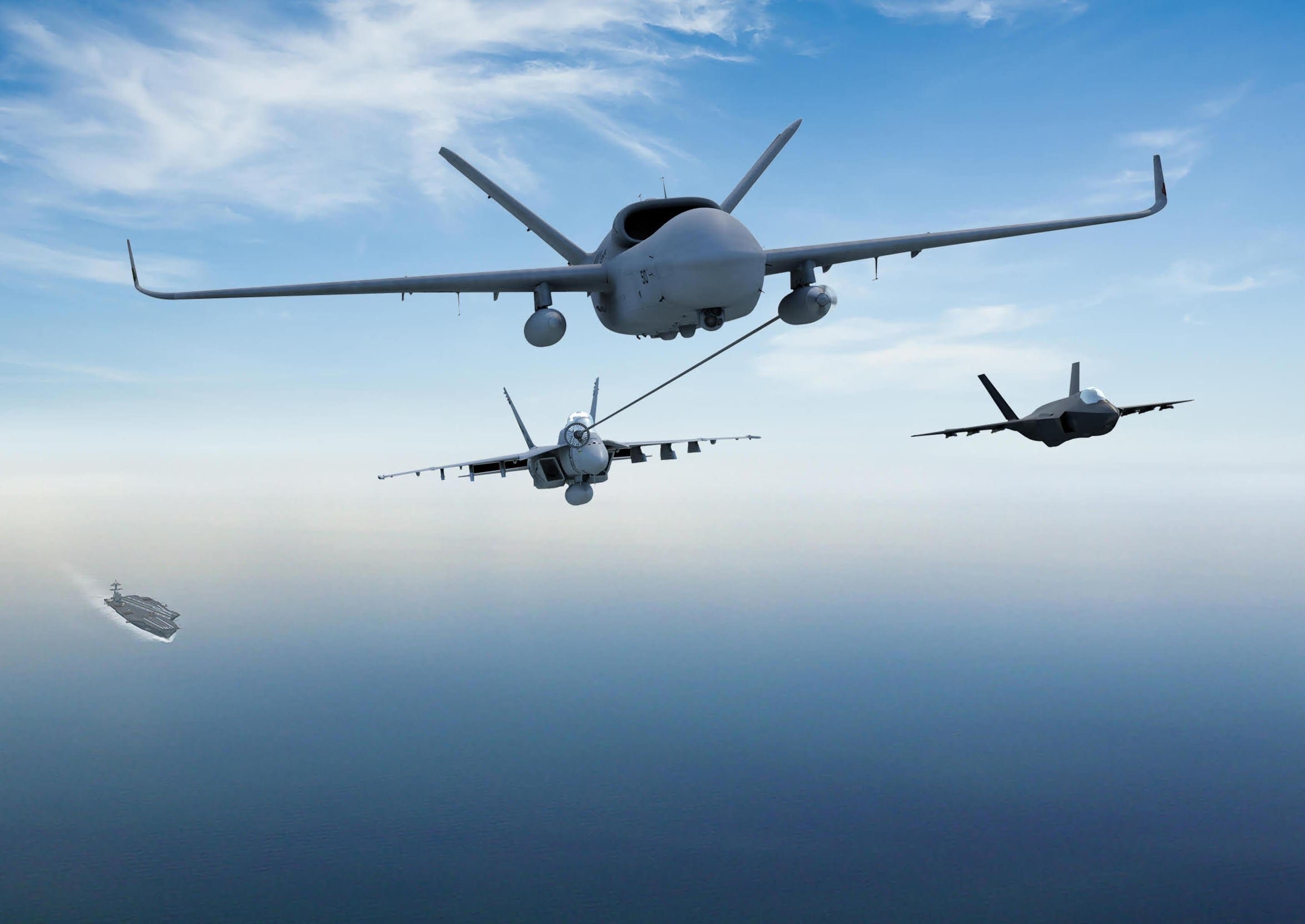The Navy announced a new warrant officer specialty designator whose job will be to operate carrier-based MQ-25 Stingray unmanned aerial vehicles, which are expected to start appearing in fleet carrier air wings sometime in 2024.

The Navy announced a new warrant officer specialty designator whose job will be to operate carrier-based MQ-25 Stingray unmanned aerial vehicles, which are expected to start appearing in fleet carrier air wings sometime in 2024.
The establishment of the Aerial Vehicle Operator (AVO) warrant officer specialty became a reality Dec. 9 with Secretary of the Navy Kenneth J. Braithwaite’s approval of the new designator, which was announced in NAVADMIN 315/20.
Over the next 6-10 years, the Navy will recruit, train and send to the fleet, a community of roughly 450 warrants in grades W-1 through W-5.
Those selected for the program will first complete Officer Candidate School in Newport, R.I. Upon graduation, they will be designated as Warrant Officer One and must complete basic flight training as well as advanced training on the MQ-25 aerial vehicle. Once complete with basic flight training, these officers will earn their own distinctive Navy “wings of gold” warfare device and be assigned the 737X designator.
“AVO’s will start out operating the MQ-25 Stingray, the Navy’s first carrier based unmanned aerial vehicle, which is expected to join the fleet with an initial operating capability in 2024,” said Capt. Christopher Wood, aviation officer community manager at the Bureau of Naval Personnel in Millington, Tenn.
The use of warrant officers as the primary operators of unmanned aerial vehicles came about because the expected career path they’ll have as they move up the ranks will be as technical specialists who complete repetitive tours, which fits the Navy’s model on how warrant grades are utilized.
“Unlike traditional Navy Chief Warrant Officer’s, the majority of these officers will be accessed much younger and trained along the lines of current Naval Aviators and Naval Flight Officers in the unrestricted designators,” Wood said.
“However, Naval Aviators and Naval Flight Officers require assignments that progress in tactical and leadership scope to be competitive for promotion, while warrant officer AVO’s will be technical specialists and spend their careers as operators.”
Navy Recruiting Command will begin accepting applications for initial AVO accessions in fiscal year 2022. In addition to street-to-fleet warrants, enlisted Sailors will also be able to apply for the program, and potentially earn the 737X warrant officer designator.
“Currently, the plan is to grow the community from the ground up with Warrant Officer AVOs,” Wood said. “However, Naval Aviation will continue to evaluate the requirements of the program as it matures.”
Commanding and executive officers, as well as department heads of MQ-25 squadrons, will be filled by aviators and flight officers administratively screened for those commands.
“During the first 4-5 years of the program, some MQ-25 AVOs will come from other Type/Model/Series as we build up the knowledge base, with the first 3-4 deployments having a mix of existing unrestricted line and new warrants making up the ready room.”
And though right now the community will be focused on the MQ-25, in the future, warrant officer AVOs may also operate the MQ-4C Triton while on shore duty following their initial MQ-25 sea tour. As the Navy’s footprint in unmanned aerial vehicles increases, so could the scope of the AVO community.


You know, until someone decides they need JPME 1 to make CWO-3, a master’s to make CWO-4 and be selected for command of a manned fixed wing squadron to make CWO-5. Then they will have to rotate out of their technical skill set to “compete” in the broader sense. Ah screw it, might as well make them regular officers!